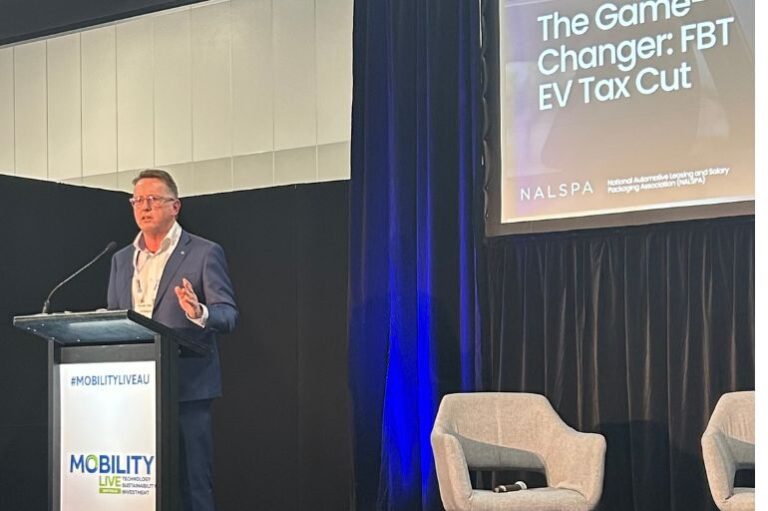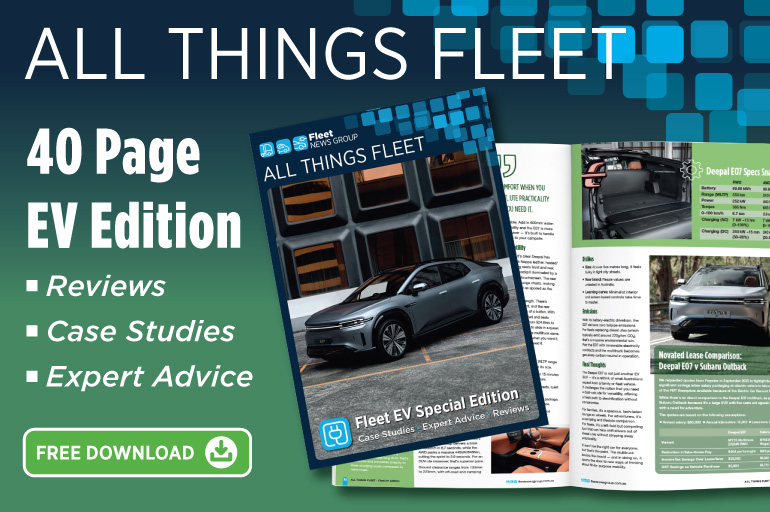At Mobility Live 2025 in Sydney, Rohan Martin, CEO of the National Automotive Leasing and Salary Packaging Association (NALSPA), delivered a powerful message: “Affordability is the key to unlocking mass EV adoption.” His presentation, Maximising EV Affordability: The Role of Salary Packaging and the FBT EV Exemption, outlined how novated leasing has become one of Australia’s most effective tools for accelerating the shift to electric vehicles.
Learning from Solar’s Success
Martin began by drawing parallels with Australia’s solar journey. In 2006, fewer than 5,000 households had rooftop panels. A year later, when the Federal Government doubled the solar rebate, installations surged — and today, more than 38% of Australian homes generate their own solar power.
“The lesson from solar,” Martin explained, “is that sustained incentives and strong policy signals drive confidence, investment, and adoption. The same principle applies to EVs.”
Overcoming Barriers to EV Uptake
Despite rapid growth, Australia’s EV market share sits at around 11% — behind Norway (87%), China (38%), the UK (21%), and Germany (19%). Martin pointed out that while range anxiety, limited model choice, and charging infrastructure gaps persist, the biggest obstacle remains the upfront purchase cost.
EVs offer around 80% lower running costs compared to petrol vehicles, yet the higher sticker price deters many buyers. That’s where salary packaging and the Electric Car Discount — Australia’s FBT exemption for EVs — come in.
The FBT EV Exemption: A Game Changer
Introduced on 1 July 2022, the FBT exemption allows employees to lease battery-electric or hydrogen fuel-cell vehicles under the Luxury Car Tax (LCT) threshold of $91,387 (2024–25) without paying fringe benefits tax. Through novated leasing, employees use pre-tax income to cover the cost of the car and running expenses — reducing taxable income and boosting take-home pay.
“This policy directly removes the number one barrier — the upfront cost premium,” Martin said. “It’s now responsible for generating nearly half of all EV sales in Australia.”
How Novated Leasing Works
Martin demystified the process:
- Choose an eligible EV under the LCT threshold.
- Employer sets up a novated lease with a salary packaging provider — at no cost to the employer.
- Payments come from pre-tax salary, reducing income tax.
- All vehicle expenses are bundled — lease, registration, insurance, maintenance, and charging — into one simple payment.
- With zero FBT, the employee maximises savings.
The result is powerful. Comparing a $70,000 Tesla Model Y and a $49,000 Toyota RAV4, Martin showed that under a novated lease with the FBT exemption, the Tesla costs just $375 more per year in disposable income terms for a driver earning $120,000 — effectively eliminating the price gap.
Evidence the Policy is Working
Independent modelling by Magenta Advisory and the Pragmatic Policy Group, commissioned by the Electric Vehicle Council, NALSPA, and the Australian Finance Industry Association, confirms the results.
Since the FBT exemption began, 105,500 additional EVs have hit Australian roads. Used EV sales have jumped 157%, and extending the policy to 2035 could halve vehicle emissions compared with ending it in 2027. It would also put 1.5 million new BEVs and 870,000 used EVs into circulation.
“We’re seeing exponential growth — from 0.1% market share in 2018 to 12.1% projected in 2025,” Martin said. “That’s the momentum of a market transforming.”
Everyday Australians Are Benefiting
Contrary to popular belief, Martin emphasised that novated EV leases aren’t limited to wealthy city executives.
He shared the story of Rob, a firefighter from Chesney Vale in regional Victoria, who drives a BYD Sealion 6: “We wanted to save money on fuel. The FBT exemption was a big factor — it was one of the main reasons we bought our EV.”
Likewise, Brendan, a small-business electrician from Melbourne, swapped his diesel Amarok for a Tesla Model Y: “It costs less than a coffee a week to drive 400 kilometres. The FBT exemption helped reduce the upfront capital costs.”
NALSPA’s data shows the strongest uptake in outer suburban and regional areas — including Werribee, Craigieburn, Camden, and Toowoomba — where residents typically travel longer distances and have high solar penetration, allowing them to charge with renewable energy.
A Broad Demographic Impact
Demographically, 68% of novated EV drivers are aged 35–54, the prime working age. Another 31% fall outside that bracket, reflecting growing generational appeal. Gender diversity is improving too, with female participation rising annually as more models enter the market.
By occupation, over half of participants come from non-corporate sectors — teachers, nurses, public servants, emergency service workers, and charity staff — highlighting the broad accessibility of the policy.
Changing the Market Landscape
Tesla remains dominant with the Model Y (23%) and Model 3 (7%), but BYD’s Seal (19%) and Atto 3 (5%) and Kia’s EV5 (6%) are expanding choice. Martin noted that diversity of supply is improving, but more work is needed: “We need more right-hand-drive EV SUVs and utes under the LCT cap to suit Australian needs.”
Challenges Still Ahead
Martin acknowledged that hurdles remain:
- Awareness — many employers and employees still don’t know the policy exists.
- Infrastructure — charging access, especially at workplaces and in regional areas, needs to expand faster.
- Vehicle choice — limited options for large SUVs and utes below the LCT threshold.
- Policy certainty — despite no legislated end date, media speculation about the exemption’s future creates hesitation.
- Battery confidence — addressing misconceptions with battery health certificates and better residual-value data will be key.
The Path Forward
Martin closed with a clear message: Australia is in its “critical growth phase” for EVs. To maintain momentum, government must extend and reinforce demand-side support like the FBT exemption, while accelerating charging infrastructure and consumer education.
“The FBT tax cut works,” he said. “It’s targeted, effective, and delivering measurable results for everyday Australians. But we can’t stop now — sustained support will ensure EVs become the default choice rather than the alternative.”







